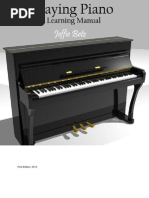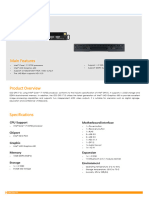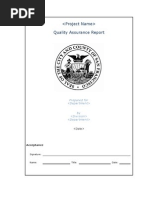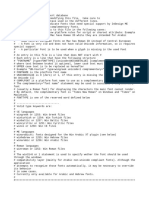Piano
Piano
Uploaded by
alf2008Copyright:
Available Formats
Piano
Piano
Uploaded by
alf2008Copyright
Available Formats
Share this document
Did you find this document useful?
Is this content inappropriate?
Copyright:
Available Formats
Piano
Piano
Uploaded by
alf2008Copyright:
Available Formats
Learn How to Play Piano Chords and More
2013 HowToPlayKeyboardOnline.com
Learn How to Play Piano Chords, Notes, Scales,
Proper Finger Techniques, Improvisation, and more
Learn How to Play Piano Chords and More
2013 HowToPlayKeyboardOnline.com
Table of Contents:
Chapter 1. How to Play Piano Chords Playing a C Chord
Chapter 2. How to Learn Faster using a Piano Chord Finder
Chapter 3. How to Play Keyboard Notes
Chapter 4. How to Place Fingers Properly on the Keys
Chapter 5. How to Improvise Methods and Tips
Chapter 6. How to Play Scales on the Piano
Chapter 7. Tips to Improve Your Piano Skills 101
Chapter 8. How to Play Twinkle Twinkle Little Star on Piano
Chapter 9. How to Memorize Classical Piano Sheet Music
Chapter 10. A Review of the Popular Online Course - Rocket Piano
~ This eBook was created by Ruth R Martin ~
2013
HowToPlayKeyboardOnline.com
Feel free to share it with your friends!
Learn How to Play Piano Chords and More
2013 HowToPlayKeyboardOnline.com
How to Play Piano Chords Playing a C Chord
1. Turn on the keyboard by pressing the button titled 'Power' or 'On/Off'.
2. Count up 30 keys to get to middle C.
3. Once on the middle, count 4 keys to reach E (the second note of the C
chord).
4. Next count up 3 keys to reach G.
5. Now we have the 3 keys within the C chord C-E-G.
6. Look for the key function on the keyboard, titled Voice, (This is where you
will find different voicing like piano, guitar, violin. Choose a piano sound.
7. Press down the C, hold it with your pinky finger.
8. While holding the C with your pinky finger, place your middle finger on the
E.
9. While holding the C and E with appropriate fingers, place your thumb on the
G.
10.
Press all of these notes down together.
Learn How to Play Piano Chords and More
2013 HowToPlayKeyboardOnline.com
11.
Congratulations, youve just played a C chord! Practice playing a C
chord until you can find it automatically and play it smoothly.
12.
Now you can go to other sounds in the keyboard by simply pressing
the button that has a up symbol to experiment with different sounds like
guitar, or organ.
For video tutorials on how to play piano chords, visit: How to Play Piano Chords
Learn How to Play Piano Chords and More
2013 HowToPlayKeyboardOnline.com
How to Learn Faster using a Piano Chord Finder
Individuals who were born with a lot of musical talent don't usually need a chord
finder because they are good at it naturally. The rest of us can use all the help we
can get! Learning how to play keyboard with the right hand alone is quite simple.
However, when it comes to learning how to play with both hands, the left hand
playing chords, it gets more tricky. Now the left hand needs to learn how to find
chords, and should eventually come to a place where it has memorized them, and
can play them automatically.
You need a good musical ear to be able to hear what keys need to be played
together to make a proper chord. There are many, many chords you can play, but
if you have trouble finding chords, you might appreciate a little extra help.
Lucky for you, there is actually software available, called a chord finder, that can
make all of it much easier. I wish I had something like this when I first started
learning how to play keyboard! It would have saved me a lot of time, headaches,
stress, and frustration!
A Review of Duane Shinns Instant Chord Finder
Duane Shinn from Keyboard Workshop created software called The Instant
Piano Chord Finder which has helped many beginners and advanced piano and
keyboard players to find chords more easily.
The digital product is downloaded instantly upon receipt of payment so the
information is available immediately with no waiting for a product to arrive in the
mail. This is wonderful because when you need to know how to find chords it is
better to have this knowledge available quickly.
Duane, a well-known pianist as well as a piano teacher, is the perfect person to
learn chords from because he had the experience with the piano, as well as his
success as an e-course author and online instructor to pull from when he created
this product.
Learn How to Play Piano Chords and More
2013 HowToPlayKeyboardOnline.com
Many individuals will benefit from it, including those who are learning music
theory, are interested in playing chords, guitarists, music composers and those
writing sheet music. The product has a well-designed interface that is attractive
and easy to use.
The Instant Chord Finder Features:
It consists of three parts: The musical staff, the keyboard layout, the
keypad.
Available on a concise chart right on your desktop.
The chords are displayed on the keyboard and on the bass and treble clef
music staff making it easy to locate and play the chords even for beginner.
Using the software will help to speed up your sight-reading abilit.
Effective tool for piano players, keyboard players, organ players, and
synthesizer player.
Cheaper than a college education for learning chords.
It shows major chords, minor chords, augmented chords, diminished
chords, 7th chords, minor 7th chords, 6th chords, minor 6th chords, major
7th chords, 9th chords, 11th chords, 13th chords and suspended chords
(sus) as well as all the inversions of these piano chords, all the scales
including the 12 major scales, 12 harmonic minor scales, 12 melodic minor
scales and the 12 major pentatonic scales.
The Instant Chord Finder Pros:
The product is also available on CD Rom for those who would rather have it
in that method instead of an instant download.
The Instant Chord Finder is a very easy program to use.
The program functions as a chord dictionary, chord locator and chord finder
as well as showing all the inversions of piano chords.
Learn How to Play Piano Chords and More
2013 HowToPlayKeyboardOnline.com
The Instant Chord Finder Cons:
Does not show minor pentatonic scales.
Software does not work on a Web TV or Mac computer.
The Instant Chord Finder Recommendation:
The Instant Chord Finder by Duane Shinn is highly recommended to anyone
looking to learn music theory, those in need of finding chords on a piano,
keyboard or organ, or those writing sheet music. The software is designed for
beginners as well as advanced keyboard and piano players, and is very easy to
use.
For more details, visit:
How To Play Keyboard with a Piano Chord Finder
===================
Learn How to Play Piano Chords and More
2013 HowToPlayKeyboardOnline.com
How to Play Keyboard Notes
Assuming that you already have a basic knowledge of how to play keyboard or
piano, and are learning how to sight read the keyboard notes on the music
sheet, a few hints on how to learn to read notes might help. Just like in typing, do
not look down at your hands - reading the keyboard notes will become as second
nature as reading a book!
1.) Find music books at your local library, borrow books or print keyboard notes
sheet music from a website at your skill level or easier. This should be music that
you think you would like but have never heard before.
2.) Sit at the keyboard or piano, and open the book to the first page. Look at the
keyboard notes on the music sheet, say the notes softly, and learn to
understand the piece a little bit without actually playing any part of it. Look at the
key signature, any changes of clefs, and the dynamics of the pi ece. Look for
chords and try to determine what they are.
Look for the trickiest part of the piece and determine a speed at which you think
you can play even the trickiest parts. It is important to not stop and restart
when you make a mistake. Just keep playing. Look for patterns while you are
playing, and always try to read a minimum of one measure ahead.
3.) When you finish one piece, repeat it until you feel comfortable knowing the
names of the keyboard notes. Remember, it is like typing your mind will tell
your fingers where to go once you practice it often enough.
4.) Continue with the same piece, and when the keyboard notes are easy to play,
learn the timing of the piece. No piece will sound good if the timing is incorrect.
5.) Keep practicing in this manner as often as you can. A few times a week is
best. Feel free to go back and study the pieces you played in more depth. The
more you practice, the better your sight reading skills will become.
Learn How to Play Piano Chords and More
2013 HowToPlayKeyboardOnline.com
More Tips on Learning Notes:
You can, if you do not have a keyboard or piano nearby, read the keyboard
notes without even playing. Look at their positions and remember what
they look like. Get it to memory.
A very good skill when sight reading is recovering from mistakes. You will
make them. Don't let them fluster you; just keep playing. It is almost
guaranteed that if the listener isn't familiar with the music, and you don't
give it away, they'll never know.
One of the hardest parts of sight reading music is getting the rhythm
correct. It helps to count out loud, "One and two and three and four and"
Of course the numbers that you count depends on the piece.
It helps to accompany a singer or other instrument while sight reading. This
forces you to stay honest.
Check for sharps or flats, key changes, or changes in the time signature. If
you are dealing with any large jumps (i.e., octave jumps), also beware of
those. Double and triple check any note that isn't in the staff.
Do not judge yourself or your ability as you sight read. Remember, you are
simply trying to improve your reading skills. Since sight reading keyboard
notes involves playing continuously (not stopping as if you were practicing
to perfect the piece), your focus is important. Getting angry at yourself
merely distracts you from the main goal. Smile and play with intent.
Another very good (and far more enjoyable) way to practice sight reading is
to play duets with a friend, as both pianists will be forced to keep in time,
play continuously and with correct notes as far as possible.
Learn How to Play Piano Chords and More
2013 HowToPlayKeyboardOnline.com
How to Place Fingers Properly on the Keys
This chapter will guide you through the recommended proper finger placement on
the keyboard. Placing your fingers on the keys correctly right from the beginning
will make a big difference in learning piano, well and quickly.
First you will need to memorize the fingering number system. Fingers are
numbered to make it easier to write down finger placement on sheet music. It
also helps explaining proper keyboard finger placement. The numbering of fingers
is the same for both left and right hands. The numbering system is as follows:
The thumb finger is number 1.
The index finger is number 2.
The middle finger is number 3.
The ring finger is number 4.
The pinky finger is number 5.
Right-hand fingers placement on keyboard:
Start at Middle C.
Put finger 1 on the middle C note key.
Put finger 2 on D, 3 on E, 4 on F, 5 on G. This is known as the Going up
pattern.
Play the notes C-D-E-F-G using the current finger placement.
Move finger 1 to the right, and below the other fingers just when your
finger 5 starts to go down to hit the G note key.
Pass finger 1 under finger 5 to play the next A note.
Repeat the five finger order outlined before so that finger 2 presses B, 3 on
C5, 4 on D5, and 5 on E5.
Repeat the previous pattern until you reach the end of the keyboard.
Learn How to Play Piano Chords and More
2013 HowToPlayKeyboardOnline.com
Left-hand fingers placement on keyboard:
Start at Middle C.
Put finger 1 on the middle C note key.
Put finger 2 on B3, 3 on A3, 4 on G3, 5 on F3. This is known as the Going
down pattern.
Play the notes C4-B3-A3-G3-F3 using the current finger placement.
Move finger 1 to the left, and below the other fingers just when your finger
5 starts to go down to hit the F note key.
Pass finger 1 under finger 5 to play the next E3 note.
Repeat the five finger order outlined before so that finger 2 presses D3, 3
on C3, 4 on B2, and 5 on A2.
Repeat the previous pattern until you reach the end of the keyboard.
Learn How to Play Piano Chords and More
2013 HowToPlayKeyboardOnline.com
How to Improvise Methods and Tips
So what is piano improvisation and why might you want to learn it? The simple
definition of it is performing without preparation. Improvising can improve your
piano playing and the sound of your melody/music. It will change an ordinary
piece of music into an artful masterpiece! Below are some basics on several
different piano improvisation methods.
Basic Steps to Piano Improvisation:
1. Have a knowledge of a variety of music, so as to not be imitating any one
song.
2. Learn about scales. Jump in and learn one that has a lot of sharps or flats in
it, such as B Major. Practice the scale, just in the right hand at first. You
might find these "bumpy" scales are easier to play than C major, since you
can "see" how the scale is shaped!
3. Learn about chords. It is suggested that you learn triad chords before
moving on to quartals and such. Triad chords consist of three notes (1-2-3)
and between two notes and the root(1-2 or 1-3) is a distinct interval. For a
quick example, a C major traid consists of a C-E-G. Between C-E is a major
3rd, while between C-G the interval is a perfect fifth.
4. There are as many ways to improvise as there are people. Here are some
suggested techniques to try give them each a shot!
Method One:
Sit down and hit notes only of the same key. (F, G, Em, A#, etc.)
Have your left hand play the background chorus (slow block or broken
chords) in the same key.
Have your right hand playing the melody. Switch keys once you become
better at it to give it a broader, more complex feel and to amplify the
beauty of the song.
Learn How to Play Piano Chords and More
2013 HowToPlayKeyboardOnline.com
Method Two:
Play a slow 4/4 piece with each measure getting one chord on the left hand.
With the right, improve a melody within that chord.
The next measure switch to a different chord and continue the melody in
that next chord. Continue this until you become proficient (or bored).
Method Three:
Once you've learned how to play some scales in both hands, try improvising
with both hands going at once.
Get your fingers moving in the same scaleit'll sound alright. Try playing a
"question and answer" game with your hands.
Play some random phrase in one hand and try to repeat it in your other
hand.
Start simple. Eventually you may find your hands can generate melodic
ideas simultaneously that work together!
Method Four:
Instead of simply playing block chords or arpeggios in one hand, try to
make the top or bottom note of that accompaniment form its own melody.
The pinky and the thumb tend to be most convenient for this way of
playing.
Try playing accompaniments in your right hand with chords or arpeggios
and melodies in your left hand.
Additional Tips to Piano Improvisation
Learn How to Play Piano Chords and More
2013 HowToPlayKeyboardOnline.com
As with anything to do with music, practicing is the key. Improvisation cannot be
completely spontaneousit must build on a vocabulary of musical devices. These
can include small phrases of melody, rhythms, accompaniments, harmonic
progressions, and so on. The more expansive your vocabulary, the more your
music will become "your own."
Remember, to do this you should also listen to other people playing other pieces,
and listen to other people improvising too, so you get a feeling of how to
improvise. Experiment with playing measured rhythms (4/4 etc.) and completely
free rhythm. In free rhythm, there are no rules at all. You may find this helps you
come up with new ideas easier than trying to fit all your ideas into a particular
kind of rhythm. Record yourself early and often. Listen to these recordings.
When you're starting out, it may be difficult to remember things you played. If
you listen to your recordings, you may hear something cool you did that you
forgot. Then you can pick out that cool idea and use it againthus helping to
build your musical vocabulary. Find a quiet spot with a window. This helps you to
be yourself and let what things you have cooped up inside flow out onto the keys.
Inspiration is many times found when viewing the beauty of the earth.
Relax and be loose with your fingers. If you mess up and accidentally hit a note
not in key, go with it and keep going in the new key, don't go back. (EXAMPLE:
Key of C> you play CEGAF#C#D<now you're in the key of D) Vary
in volume, intensity, speed, and other dynamics to add emotion and beauty. Use
improvisation to let out your anger or soothe your worries. Play what your heart
tells you to play (cheesy, but true).
If you mess up, pretend it was a part of the song and keep going with it. Learn
music patterns. A harsh, short gliss gives the impression of anger and reproach.
Arpeggios in the bass voice tend to give a feeling of movement. Observe patterns
in speech and music and use those observations to your advantage.
Do not feel you must learn tons about music theory "before" learning piano
Learn How to Play Piano Chords and More
2013 HowToPlayKeyboardOnline.com
improvisation. It is sufficient to begin by learning maybe one scale and a
couple of chords within ityou can learn other chords/scales/theory with
time!
Do not have any one piece in mind while playing; let it come naturally.
Don't be afraid to hit "wrong" notes! There are no wrong notes in piano
improvisationall is freedom!
Learn How to Play Piano Chords and More
2013 HowToPlayKeyboardOnline.com
How to Play Scales on the Piano
Your 5th finger should generally only be used for starting or ending a scale,
not passing tones. In other words, you should cross your 1st finger under
your 3rd or 4th finger, not the 5th.
For a C scale, right hand example, you will play C, D, and E with fingers 1,
2, and 3, then pass finger 1 under the 3rd to play F, G, A, B, and C with 1,
2, 3, 4, and 5. Reverse this coming back down. (Note that ending on your
5th finger here is fine.)
If you are continuing up more than one octave, you will cross your 1st
finger under the 4th, changing from B to C ready to start over with the
same pattern on the next octave.
For the left hand going up, you want to cross your 3rd finger over your first
going from G to A. Continuing another octave, you'll cross your 4th ove r the
1st from C to D. It makes more sense to think of the mirrored fingerings,
but playing up with your right and down with your left is not the norm.
(Note that beginning on your 5th finger here is perfectly acceptable.)
This crossing under fingers 3 and 4 (or over with fingers 3 and 4) may not
seem important on the all-white-keys C scale, but when you start working
on other keys, its importance becomes clear. Starting these good habits in
this easy scale will pay off in the long run. (In most keys, you will always
begin with your left hand on your 5th finger and end with your right hand
on your 5th finger.)
Additional Tips:
Use only the 5 fingers to play either C-D-E-F-G (right hand), or C-B-A-G-F
(left hand). Practice playing the notes going upward (to the right), then
downward (to the left) then both. After your fingers are loose enough, start
practicing going 10 notes up or down.
Tips to Improve Your Piano Skills 101
Learn How to Play Piano Chords and More
2013 HowToPlayKeyboardOnline.com
Starting to learn how to play keyboard or piano but finding it hard to improve?
Been taking piano lessons for some time now but feeling no progress? Or maybe
you have some piano experience but you need to improve your playing skills? In
this chapter, we'll be showing you how to improve your current piano skills.
The chapter takes into account people who learned playing by ear, using
instructional materials such as books and DVDs, or using lessons from a
professional teacher. So, if you feel that a certain step has already been
accomplished, go ahead and skip it to the next step. Dive in and enjoy learning
how to play keyboard and improving your playing skills!
Things You'll Need to Improve Your Playing Skills:
A piano or a digital piano. If you're going to use a digital piano or a
keyboard, make sure it's fully weighted with hammer-action capabilities
if possible.
Piano lessons, for those intending to learn utilizing the experience and
knowledge of an instructor.
A piano teaching media-set (such as DVD sets, books, videos, etc.) for
those intending to learn by themselves.
A printer and some musical notation software is not a necessity but can
improve the process greatly.
Time management software (simple spreadsheets applications are
enough in most cases) can benefit you greatly too.
A serious commitment. Learning how to play keyboard or piano is not a
job that you can do in a week or two and be done with it. Improvements
are done in small steps not huge ones. Without commitment, you won't
be able to really improve.
How to Play Keyboard ~ Steps to Improving:
Thank You for previewing this eBook
You can read the full version of this eBook in different formats:
HTML (Free /Available to everyone)
PDF / TXT (Available to V.I.P. members. Free Standard members can
access up to 5 PDF/TXT eBooks per month each month)
Epub & Mobipocket (Exclusive to V.I.P. members)
To download this full book, simply select the format you desire below
You might also like
- I Have No Mouth, and I Must Scream - Harlan EllisonDocument11 pagesI Have No Mouth, and I Must Scream - Harlan Ellisonagameno91% (11)
- Grabovoi Codes and Numbers List To Change Your Life ForeverDocument10 pagesGrabovoi Codes and Numbers List To Change Your Life Foreveralf200894% (17)
- Piano Music For Beginners Piano Guide With Songs For Beginners Wonder Your Style (Piano Music Books Book 2) (J. S. Piano (Piano, J. S.) ) (Z-Library)Document64 pagesPiano Music For Beginners Piano Guide With Songs For Beginners Wonder Your Style (Piano Music Books Book 2) (J. S. Piano (Piano, J. S.) ) (Z-Library)farkli8867% (12)
- How To Play PianoDocument60 pagesHow To Play Pianomarijuana11796% (24)
- Scale Genie & Fingering Chart MC 12 01 2015 Copyright PDFDocument1 pageScale Genie & Fingering Chart MC 12 01 2015 Copyright PDFgobinathNo ratings yet
- 10 Piano Sight Reading TipsDocument9 pages10 Piano Sight Reading TipsBernie Visto100% (4)
- Uniflair: WWW - Uniflair.su +7 (495) 204-30-01 8 (800) 775-42-13 E-Mail: Info@uniflair - SuDocument54 pagesUniflair: WWW - Uniflair.su +7 (495) 204-30-01 8 (800) 775-42-13 E-Mail: Info@uniflair - Suzarif100% (1)
- Learning To Read Piano MusicDocument7 pagesLearning To Read Piano Musicrspdf67% (6)
- System Nikolai Amosov - 1000 Movement - National Technical University of Ukraine - Kyiv Polytechnic InstituteDocument3 pagesSystem Nikolai Amosov - 1000 Movement - National Technical University of Ukraine - Kyiv Polytechnic Institutealf2008No ratings yet
- Condition:: MODELS: Musso, Korando, ChairmanDocument8 pagesCondition:: MODELS: Musso, Korando, Chairmanfrancisca19100% (1)
- Autodesk Model Checker On Forge - Instructions (v4)Document8 pagesAutodesk Model Checker On Forge - Instructions (v4)Harikrishnan KanakarajNo ratings yet
- 5 Piano MistakesDocument13 pages5 Piano MistakesBertol100% (5)
- Piano StartDocument53 pagesPiano StartMayssa Bougherra100% (2)
- Learn How To Play Keyboard Amp Piano Chords and MoreDocument32 pagesLearn How To Play Keyboard Amp Piano Chords and MoreVinit SabooNo ratings yet
- Piano Lessons - Learn How To Play Piano CourseDocument54 pagesPiano Lessons - Learn How To Play Piano CourseLuis RaínhoNo ratings yet
- Piano ChordsDocument31 pagesPiano ChordsMandeep Dayma86% (7)
- Playing Piano Beginners Guide To Playing The Piano: Please Visit Our SponsorDocument33 pagesPlaying Piano Beginners Guide To Playing The Piano: Please Visit Our SponsorJenn AngNo ratings yet
- "The Hapi Book": High Achiever Piano InstructorFrom Everand"The Hapi Book": High Achiever Piano InstructorRating: 5 out of 5 stars5/5 (1)
- Piano Chords SampleDocument11 pagesPiano Chords SampleIsaac Tata76% (17)
- 2019 OPC Piano PlaybookDocument27 pages2019 OPC Piano Playbookalvaro0molina0iglesi100% (2)
- Speed Read PianoDocument168 pagesSpeed Read Pianoallie4home100% (11)
- Pianist Must Have SDocument96 pagesPianist Must Have Ssunilbn84No ratings yet
- Piano Lessons by Dan StarDocument79 pagesPiano Lessons by Dan StarDuncan Sharples75% (4)
- Chords 101Document17 pagesChords 101staalelc98% (89)
- Piano Basics Playing Piano Made SimpleDocument34 pagesPiano Basics Playing Piano Made SimpleColeman2223100% (2)
- Piano BasicsDocument36 pagesPiano BasicsZoe Gleeson100% (1)
- 365 Lessons Every Successful Piano Player Must KnowDocument58 pages365 Lessons Every Successful Piano Player Must KnowGaisang92% (13)
- Omg Piano Course Chords PDFDocument105 pagesOmg Piano Course Chords PDFdsowm75% (8)
- PianoDocument118 pagesPianojose5luis_2No ratings yet
- Study GuideDocument12 pagesStudy Guideasdfgssdf0% (1)
- Bare Essential Keys To Harmony - Piano CoutureDocument42 pagesBare Essential Keys To Harmony - Piano Couturepianocouture71% (7)
- Guide 10 Tips Piano ProgressDocument16 pagesGuide 10 Tips Piano ProgressPartituras VariosNo ratings yet
- How To Play Pop Piano in 30minsDocument38 pagesHow To Play Pop Piano in 30minsdanielwongts0% (1)
- Piano Couture - Bare Essential Keys To HarmonyDocument54 pagesPiano Couture - Bare Essential Keys To HarmonyDesordenandolaFelicidad50% (2)
- Beginners PianoDocument25 pagesBeginners Pianopartho143100% (3)
- Chords To KnowDocument6 pagesChords To Knowtigertiger70100% (1)
- Chords BeginnerDocument53 pagesChords BeginnerRoche Victor100% (5)
- Practising The PianoDocument138 pagesPractising The PianoMohammad Ali Khodayari100% (2)
- Piano Method Books TOP 10Document8 pagesPiano Method Books TOP 10Victor Hamilton100% (1)
- Learn To Play The PianoDocument29 pagesLearn To Play The Pianodanielle leigh90% (31)
- Greatest Piano Intro Ever? Your Song by Elton JohnDocument9 pagesGreatest Piano Intro Ever? Your Song by Elton John6kq557dyv8100% (1)
- How To Read Musical Notes and Their Corresponding Piano KeyDocument11 pagesHow To Read Musical Notes and Their Corresponding Piano KeyHyuk Kuba100% (3)
- E BookDocument145 pagesE BookJust checking100% (1)
- Rocket Piano Advanced v1 2 PDFDocument59 pagesRocket Piano Advanced v1 2 PDFLucia DekeusterNo ratings yet
- Course Piano Lesson 61-65 TextsDocument29 pagesCourse Piano Lesson 61-65 TextsPascal ReijmersNo ratings yet
- Rocket Piano Beginners v1.2Document166 pagesRocket Piano Beginners v1.2Aroon Chang91% (44)
- Piano-Level1 Righthand ManualDocument16 pagesPiano-Level1 Righthand ManualAnonymous I5hdhuCxNo ratings yet
- Learn Piano Chords Using A Fake BookDocument6 pagesLearn Piano Chords Using A Fake BookRichard Brown67% (3)
- General Rules in Playing PianoDocument7 pagesGeneral Rules in Playing PianoPiano-Tutorial0% (1)
- Piano Practice TipsDocument5 pagesPiano Practice TipsNicoară SamuelNo ratings yet
- The Ultimate Guide To Composing Your Own Piano PieceDocument39 pagesThe Ultimate Guide To Composing Your Own Piano PiecePhebe A. Durand100% (7)
- (Freecourseweb - Com) How To Play Piano For Beginne...Document117 pages(Freecourseweb - Com) How To Play Piano For Beginne...Paul MuhindoNo ratings yet
- Playing the Piano By Ear Means Never Having to Remember The Notes When You Tickle The IvoriesFrom EverandPlaying the Piano By Ear Means Never Having to Remember The Notes When You Tickle The IvoriesRating: 5 out of 5 stars5/5 (1)
- PDF Piano SheetDocument18 pagesPDF Piano SheetGennaroFioccolaNo ratings yet
- Learn How To Play Keyboard and Piano Chords and MoreDocument31 pagesLearn How To Play Keyboard and Piano Chords and Moresirangvkrish100% (1)
- Learn How To Play Piano Chords, Notes, Scales, Proper Finger Techniques, Improvisation, and More!Document18 pagesLearn How To Play Piano Chords, Notes, Scales, Proper Finger Techniques, Improvisation, and More!Camyla CostaNo ratings yet
- Rocket Piano - Learn by EarDocument25 pagesRocket Piano - Learn by EarIfeanyi Ubah100% (8)
- 10 Tips and Tricks For Sight Reading Music: Practice BeforehandDocument3 pages10 Tips and Tricks For Sight Reading Music: Practice Beforehandgrover_peleNo ratings yet
- How To Improve Your Piano Skills FastDocument17 pagesHow To Improve Your Piano Skills FastThế Phương Gia LaiNo ratings yet
- Beginers Guide On How To Teach Yourself PianoDocument3 pagesBeginers Guide On How To Teach Yourself PianoPaul KarijaNo ratings yet
- How To Practice Sight Reading Flutetunes PDFDocument3 pagesHow To Practice Sight Reading Flutetunes PDFyamaha890100% (1)
- 44 Healthy Low-Carb Foods That Taste IncredibleDocument14 pages44 Healthy Low-Carb Foods That Taste Incrediblealf2008100% (1)
- Underground Bodyopus Militant WeightLoss RecompositionDocument142 pagesUnderground Bodyopus Militant WeightLoss Recompositionalf2008No ratings yet
- Drawing Reiki SymbolsDocument1 pageDrawing Reiki Symbolsalf2008100% (3)
- COE X Stream 400Document2 pagesCOE X Stream 400anon_945942926No ratings yet
- Short LocatorDocument4 pagesShort Locatorbill1022No ratings yet
- Drop BoxDocument53 pagesDrop BoxEng. Mbuy Ngandu Sanders100% (1)
- Ephrem Tesfaye - IP-II - Chapter-FiveDocument13 pagesEphrem Tesfaye - IP-II - Chapter-FiveEnoughNo ratings yet
- ICD OPS I7 D DatasheetDocument2 pagesICD OPS I7 D DatasheetJose CarlosNo ratings yet
- MI 2892 Power Master: Class A Power Quality AnalyserDocument4 pagesMI 2892 Power Master: Class A Power Quality AnalyserDenza_666No ratings yet
- Program 000 vcRuntimeMinimum x64Document44 pagesProgram 000 vcRuntimeMinimum x64Floatpoint ExistsNo ratings yet
- Advanced Certification In: Cloud Computing and DevopsDocument16 pagesAdvanced Certification In: Cloud Computing and Devopsmanjul.dixitNo ratings yet
- C - C4HCX - 24 Final 1 49Document49 pagesC - C4HCX - 24 Final 1 49access2sapserverNo ratings yet
- TxtAnalytics PDFDocument106 pagesTxtAnalytics PDFlocococineroNo ratings yet
- Quality Assurance Report: AcceptanceDocument3 pagesQuality Assurance Report: AcceptanceSFGovNo ratings yet
- Chris: Comprehensive Human Resource Integrated SolutionDocument12 pagesChris: Comprehensive Human Resource Integrated Solutionprashant adhikari0% (1)
- Formative AssessmentDocument14 pagesFormative AssessmentManpreet KaurNo ratings yet
- Me Math 8 q1 03 PTDocument3 pagesMe Math 8 q1 03 PTFlor HawthornNo ratings yet
- Intl Font DBDocument8 pagesIntl Font DBibraheemnasserzaidyNo ratings yet
- Through The Mists - R J LeysDocument3 pagesThrough The Mists - R J LeysSheila Patricia Lloyd MulveyNo ratings yet
- SL 500Document5 pagesSL 500rejnanNo ratings yet
- Intriduccion A IBM I PDFDocument46 pagesIntriduccion A IBM I PDFkevin kevinNo ratings yet
- HitchjikersGuide v1Document126 pagesHitchjikersGuide v1ArushiNo ratings yet
- Batch 1 JavaDocument22 pagesBatch 1 Javaravapati navadeepsaiNo ratings yet
- Flame Monitor Programmers Amplifiers Using Phoenix Insight Scanners PDFDocument16 pagesFlame Monitor Programmers Amplifiers Using Phoenix Insight Scanners PDFVictor Manuel Perez EsquivelNo ratings yet
- Virtual MachineDocument8 pagesVirtual MachineSrinivas Rapelli0% (1)
- Skittles ProjectDocument5 pagesSkittles Projectapi-271444168No ratings yet
- Sve 14 ADocument22 pagesSve 14 AJorge ParedesNo ratings yet
- Salgado Et Al (1993) Extended Gradient Method For Fully Non-Linear Head and Flow Analysis in Pipe NetworksDocument14 pagesSalgado Et Al (1993) Extended Gradient Method For Fully Non-Linear Head and Flow Analysis in Pipe NetworksRuben Salgado CNo ratings yet
- Fileadmin Files Aam Asia-Book A 03 China Social Credit System PDFDocument1 pageFileadmin Files Aam Asia-Book A 03 China Social Credit System PDFRicardo Salomé SilvaNo ratings yet






























































































